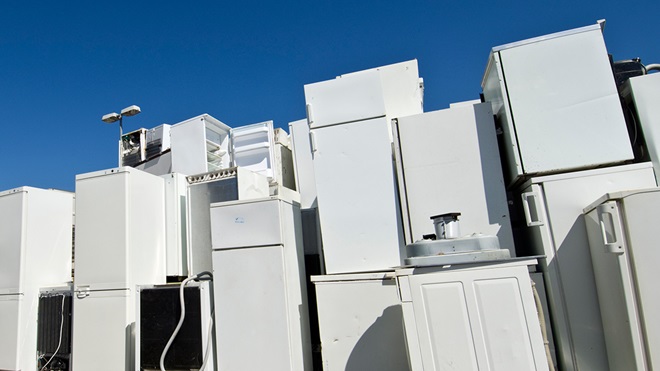It is astonishing how rapidly our attitudes to waste have shifted in the past few years.
Reusable coffee cups have gone from being a rarity to commonplace; there has been an explosion of alternatives to cling wrap; and websites that allow people to sell or give away unwanted items have boomed in popularity.
Within Australia, much of the credit for this shift in awareness about the waste we create in everyday life is due to Craig Reucassel's War on Waste TV series.
Many consumers have embraced a commitment to doing what they can to reduce what they put into landfill. However, there are limits to how much we can do on an individual level to reduce waste. The biggest reductions need to come from businesses changing their practices.
When we recently reviewed the packaging used by popular appliance brands, we found a wide range of approaches. While some companies were largely using recyclable cardboard packaging, others were still heavily reliant on polystyrene.
We also find a lot of variation when we survey consumers about how long appliances sold by major brands last. Some appliances commonly last for many years without any faults, while others break down within just a handful of years. And when a business refuses to repair a product, that often means it needs to be thrown out.
We need more incentives for businesses to make products that will last longer
There's a lot that our governments can do to fix this. For a start, we need more incentives for businesses to make products that will last longer.
One way to do this is to make longevity a point of competition. That's why CHOICE supports a labelling scheme – similar to the energy star rating scheme – to indicate how long you should be able to expect a particular product to last. If it's easy to work out which products will last longer, more of us will buy them and businesses will be forced to design more products that score well.
The labelling scheme would also indicate whether products are more easily repairable, based on the products being designed in a way that allows them to be pulled apart and reassembled with new parts.
As more and more appliances depend on software to operate, businesses also need to be required to provide updates for a reasonable period of time, so you don't end up with a product that is in good physical condition but no longer works because the manufacturer has stopped supporting it.
Other parts of the world, such as in Europe and some American states, are way ahead of us when it comes to laws that require products to last longer. It shouldn't be that hard for Australia to catch up
Stock images: Getty, unless otherwise stated.



